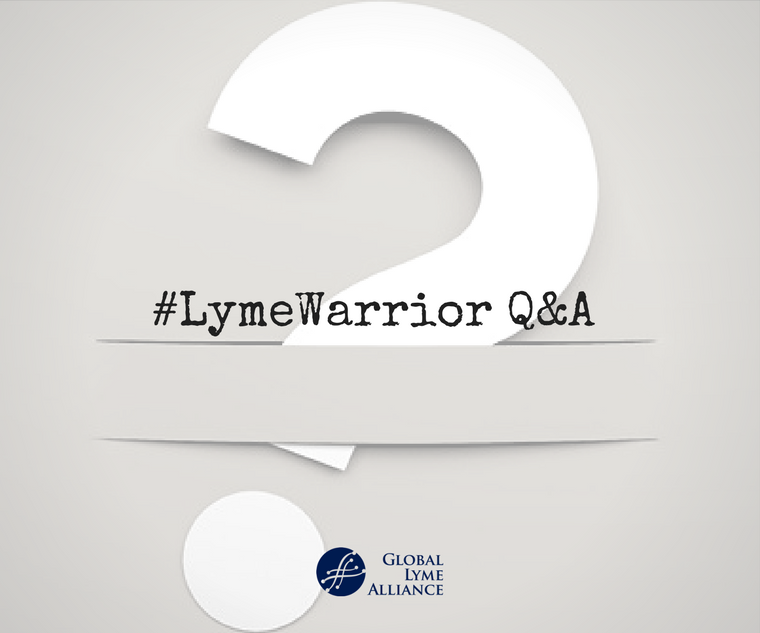
Every few months, Jennifer Crystal devotes a column to answering your questions. Do you have a question for Jennifer? If so, email her at lymewarriorjennifercrystal@gmail.com.
There is much debate on the amount of time it takes to transfer Lyme from tick to human. I don't understand why it wouldn't be instantaneous the moment the tick penetrates the skin and breaks the blood barrier.
I can understand why it would seem instantaneous, the way illnesses can be transmitted from human to human very quickly. The answer is that the exchange of pathogens happens during the time a tick is feeding on a human or animal, which can take several days. The pathogens that a tick transmits (not just Lyme, but other bacteria, viruses, and parasites that can cause co-infections) don’t start out in the tick’s mouth; they start out in the tick’s gut, and it take some time for them to move through the salivary glands into the host.
The tick can feed for several days, and while that’s happening, it’s body becomes engorged. The more engorged a tick, the more likely it’s had time to transmit pathogens to you, but there is debate over how long the exchange can take. It’s not instantaneous, but there are studies showing transmission happening in under 24 hours. If the tick has already partially fed on another host before it bites you, the transfer will take less time. Other tick-borne diseases can be transmitted much faster; Powassan virus can be transmitted in 15 minutes.
Have you noticed that air hunger caused by babesiosis is worse in higher elevations?
For me personally, yes. I have not seen scientific studies exploring this question, but just in terms of the way babesiosis manifests, it would make sense that it would be harder to deal with at high altitude. Babesia, the parasite that causes the infection babesiosis, is a malaria-like infection of the red blood cells. It depletes the red blood cells of oxygen, causing patients to experience air hunger, lightheadedness, weakness, shortness of breath, and post-exertional fatigue akin to what marathon runners describe as “hitting a wall.”
These are all symptoms of altitude sickness, too, because there is less oxygen at higher altitudes. Before I was diagnosed with babesiosis, Lyme disease, and ehrlichiosis, I experienced what I thought was just terrible altitude sickness. While skiing in the Alps, ski patrol had to take me down by sled because I was so nauseous and had such a splitting headache. When I lived in the Rocky Mountains, even when I wasn’t skiing but was just living my daily life, I suffered debilitating migraines that got worse over time, and eventually I started experiencing shortness of breath. Looking back now, I think that my altitude sickness was exacerbated by untreated babesiosis.
I have not yet returned to a high altitude since being treated for babesiosis (which is relapsing, and still flares up for me from time to time, even though I am feeling much, much better these days). I am nervous to do so. Because I’m doing so much better, I might be fine. But I also know there’s a risk that my babesiosis will relapse and that I’ll feel terrible while there. I have made smaller trips to mountains on the East coast with elevations around 3,000 feet, and those have been okay, so perhaps higher altitudes will be possible.
Is your book about your experience with tick-borne illness available?
My memoir, One Tick Stopped the Clock, is forthcoming from Legacy Book Press in September 2024. It chronicles my journey with multiple long-haul illnesses (in addition to tick-borne illness, also chronic active Epstein-Barr virus and long COVID) and showcases what happens when you’re thrown “off track” by any adversity or trauma. I hope it will serve as inspiration for anyone who can’t go back, but instead must create a new normal and move forward at a new pace.
Ten percent of proceeds from the book will go to GLA. Stay tuned for more information about the book, and for events near you!
Sign up for GLA's newsletter below.
The above material is provided for information purposes only. The material (a) is not nor should be considered, or used as a substitute for, medical advice, diagnosis, or treatment, nor (b) does it necessarily represent endorsement by or an official position of Global Lyme Alliance, Inc. or any of its directors, officers, advisors or volunteers. Advice on the testing, treatment or care of an individual patient should be obtained through consultation with a physician who has examined that patient or is familiar with that patient’s medical history.

Jennifer Crystal
Writer
Opinions expressed by contributors are their own. Jennifer Crystal is a writer and educator in Boston. Her work has appeared in local and national publications including Harvard Health Publishing and The Boston Globe. As a GLA columnist for over six years, her work on GLA.org has received mention in publications such as The New Yorker, weatherchannel.com, CQ Researcher, and ProHealth.com. Jennifer is a patient advocate who has dealt with chronic illness, including Lyme and other tick-borne infections. Her memoir, One Tick Stopped the Clock, was published by Legacy Book Press in 2024. Ten percent of proceeds from the book will go to Global Lyme Alliance. Contact her via email below.
